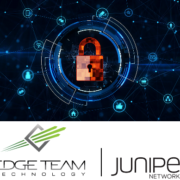5 Questions to explore Before Refreshing Your IT Network Post-Pandemic
We have questions before refreshing your IT network.
Your organization survived the mayhem that was 2020/21. IT network adjustments were made so more employees could work from home. Unplanned transitions to the cloud were completed. Perhaps you even maintained operations despite having to furlough some of your IT staff, or postponed some of the initiatives that were planned before the pandemic.
Progress was made, but the changes brought on by the pandemic aren’t over. As an IT leader, strategic transformations still need to be made to ensure the organization has a chance to survive, potentially even thrive, in the new normal instigated by COVID-19.
Before you refresh your network or start up those postponed projects, we recommend asking a series of questions. This will help you make the best use of your budget while preparing your organization for success. Keep reading for the 5 questions before refreshing your IT network.
- What does your business environment look like and how is it changing?
Is your organization comprised of multiple locations or a single campus? Will it remain a multi-location or single campus environment? Who’s coming back to the office and how frequently?
Previous infrastructure refreshes may not have included drastic changes but, for many organizations, that’s changing. For example, if your organization is an enterprise with multiple locations, you may have previously refreshed for the same number of sites, a few less or few more.
The previous 24 months proved to many business leaders that work-from-home options increase workforce productivity and reduce real estate costs. That’s why we’re seeing many organizations transition from a multi-site enterprise to a single corporate office, with most employees working from home permanently. The same applies to retailers who can operate with more sales online than within physical stores.
Other organizations plan to move forward with a hybrid model, keeping some sites open but providing work-from-home options.
Both of these scenarios change how IT leaders will refresh their networks. Continue reading the questions to ask before refreshing your IT network.
2. What are your main IT challenges and goals?
What IT challenges or goals are most critical to determine success? What are the issues that employees and customers complain about the most?
For example, do you receive complaints about choppy zoom calls? Choppy zoom calls could originate from issues with firewall capacity or policy configurations. It could also be the result of routers, switches, or Wi-Fi. Knowing the symptoms, such as choppy zoom calls, can help determine what areas of the network need attention but a thorough analysis is still required to eliminate the guess work. It’d be useless to refresh the firewalls when the real problem is actually with how the switches are configured.
3. When was your last refresh and how is it configured?
How long have you had the infrastructure? How confident are you that the infrastructure is configured correctly?
This question aligns with the trajectory of your business environment. Perhaps your SD-WAN is approaching refresh but, if the plan is to close several sites over the next 12 months, it may be worth postponing the SD-WAN refresh and focus on ensuring the infrastructure is optimally configured. This way, you make the most of your current infrastructure that may not be needed in year. Instead, invest in the infrastructure that supports a remote workforce and online business.
4. What are the capabilities of the staff managing your network?
Do you have a one-or-two-person team who has a wider responsibility of managing the whole network? Or, do you have teams of specialized and highly skilled people who focus on specific network components? Or, is it a hybrid of the two scenarios where you lead an IT staff of multiple people, and each person manages a branch or campus location?
This is one of the main factors to determining the best infrastructure for an organization.
If your IT team consists one-or-two people who are managing the entire network, a solution with a robust artificial intelligence (AI) and automation engine is in your best interest. This is because the AI and automation performs work faster and more efficiently than any human can.
Take Juniper Networks, for example. Customers using the AI-Driven Enterprise have reduced IT help desk tickets by as much as 90%. This is because the AI engine correlates the network data to identify network issues and then notifies staff. This eliminates the need for staff to receive a help desk tickets and spend hours and days digging through logs of data, manual troubleshooting, and finding maintenance windows to find and resolve the issue. With AI, IT staff are able to fix issues faster, often before users can submit a ticket.
Recommended Reading: Why Juniper Is A Magic Quadrant Leader
Solutions like this help limited IT staff be more efficient across network and security disciplines. For example, now the person who manages an entire enterprise or single site’s Wi-Fi can also remediate security issues. Let’s say the network operator receives a help desk ticket complaining of a poor Wi-Fi experience, but the root cause of the issue is really that the user’s device is infected by malware. Now the Wi-Fi network operator can immediately see within the same dashboard they manage the Wi-Fi that the problem is security related. The network operator receives a notification that a malware-infected device is connected to the Wi-Fi. He/she can even see where within the building that person with the device is located, find that user, and let them know their device was removed from the Wi-Fi network because it’s infected with malware. The network operator can remove the malware and add the device back to the Wi-Fi network.
Related Reading: Network or Security? How to Perform Root Cause Analysis Faster
This brings us to the next question.

5. What is your budget?
We recommend IT leaders look at their budget as a whole, and not just as CAPEX and OPEX. For the reasons described about, it may be more beneficial to get the more expensive but self-driving network infrastructure that can be more easily and efficiently managed by one or two staff members.
Next Steps
There are many IT network infrastructure and security manufacturers to learn about and choose from, and the process can be tedious and time-consuming.
That’s why we offer this is part of our service offers. You can read more about it in our blog post about how to choose and work with an IT solution partner, not just a technology reseller. This is an important differentiator because an IT solution partner will be able to order the products, licensing, and other sub components for a significantly lower price than if you were to purchase from an online IT reseller. This is because the cost of services and technology are built into the agreements between the IT solution provider and manufacturer.
Call us at 817-953-2750 or or submit the contact form
Partnership
This post is brought to you by Juniper






Trackbacks & Pingbacks
[…] Related Reading: 5 Questions to Ask Before Refreshing Your IT Network Post-Pandemic […]
Leave a Reply
Want to join the discussion?Feel free to contribute!